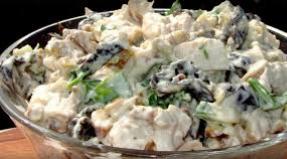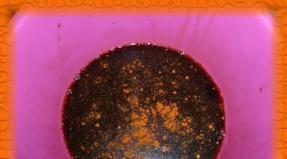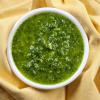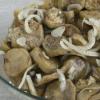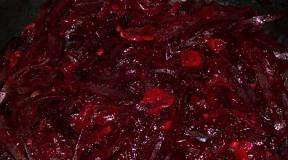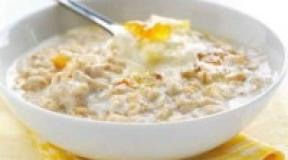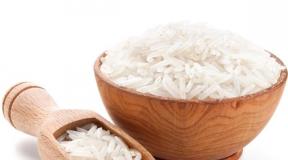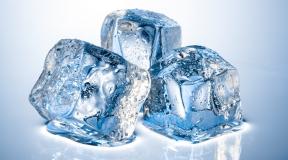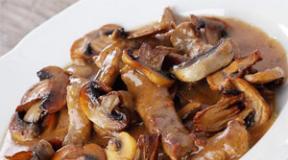Continental buffet. Continental breakfast: what is good for a European, Russian for death ...
Many tourists are perplexed when they see that in the hotel the type of food is indicated as “continental breakfast” or “CBF”. Let's understand the concept of continental breakfast: what it is and what it is eaten with. As you can imagine, literally.
Among experienced tourists there is a perception that this is the most "modest" type of breakfast of all. Partly it is, but it is worth making an amendment to the hotel: in a good hotel, the menu can be quite varied and satisfying.
To find out what makes a continental breakfast different from English, you need to go back a bit in history. In the first half of the XIX century, most Europeans were engaged in hard physical labor, which required a lot of energy and nutritious food. The traditional breakfast at that time included roasted meat, fish dishes, mushrooms, potatoes and other cholesterol charms.
- Do not miss:
By the middle of the 19th century, an estate of people who were not physically working (merchants, doctors, teachers ...) was formed in Europe. They did not need so many calories, but they were the “trendsetters” for food, including. Little by little they excluded from the menu “heavy” dishes, leaving only pastries, boiled eggs, ham and drinks: tea, coffee or milk.

The only ones who do not like these innovations are the conservative Englishmen. Reluctantly, pork roast and steaks for breakfast, they replaced sausages and bacon, but they could not completely abandon the hot meat menu. In 1855, at the suggestion of the unknown history of the hotelier, two concepts came into use: a continental breakfast (some also call it French) and English.
What is a continental breakfast in the hotel
Since then, little has changed. The main difference between a continental breakfast and its English counterpart and others is the lack of hot dishes. Another feature - the number of "food packages" in hotels is often equal to the number of guests. More than you should eat will not work. Although, in some hotels, where everything is on trust, whoever first got up, he had breakfast for two.
A more “nutritious” variety is the extended continental breakfast. It may include additional dishes, but, basically, this means that you can safely take an additive, without fear that someone will remain hungry.
In most hotels continental breakfast is self-service. This means that you yourself impose a delicacy you like on your plate. In some hotels of the highest category service is possible by waiters who serve you a table and bring food and drinks. However, the menu does not become more varied. 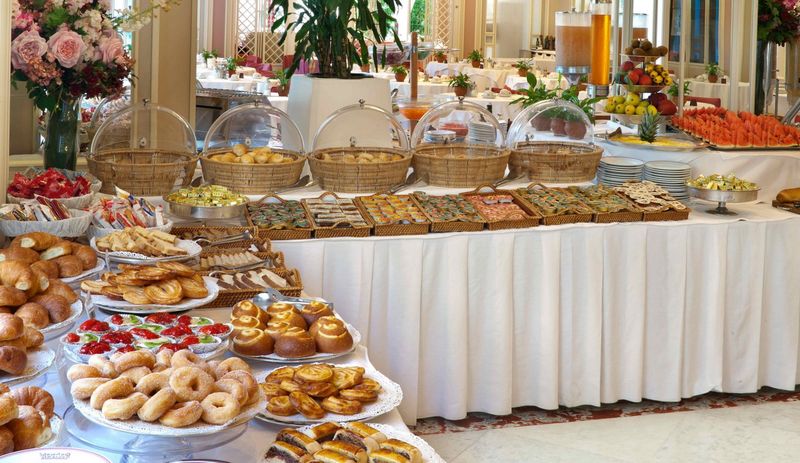
Continental breakfast: menu and assortment
The choice of products is largely determined by the hotel itself and can be completely different in hotels of different levels. Required drinks - tea, coffee and milk, however, you can often find cocoa, chocolate, juice.
- Do not miss:
An example of a classic continental breakfast:
- flour products: bread, toasts, pastries;
- jam, butter, honey;
- muesli or cornflakes with milk;
- sliced cheese, ham or sausage;
Additionally, omelette or boiled eggs, fruit, yogurt can be served. Thus, such a light type of food, like a continental breakfast, is suitable for tourists who are not accustomed to eat a lot in the morning and rely more on a hearty lunch.
Going on vacation, especially abroad, the first thing to do is to take care of the place of residence and decent food. If you chose hotels in Europe, you probably noticed that most of them offer an unusual, at first glance, type of food CBF (Continental Breakfast).
Understandably, every newcomer tourist wants to know when choosing continental breakfast, which is something that can be a good meal. But is it really?
Continental breakfast - what is it
However prosaic it may be, but compared to an English breakfast, which is very nutritious, a continental is a fairly easy start to the day. However, for most people, this form of food in the morning is the most acceptable and comfortable. As a rule, the dishes and drinks offered will provide you with energy until dinner, when you can have a more substantial meal.
The continental breakfast menu usually includes traditional drinks: tea, coffee, juice or drinking yoghurt. If we talk directly about food, then it can be different buns or croissants with jam or honey. Very often, butter and various cheeses are offered, boiled eggs and a small amount of ham are used to saturate with proteins. In addition, cereals and milk are a frequent continental breakfast. By the way, they are really very nutritious and able to charge energy for a long time.
If you look closer, a continental breakfast is something that quite a few people cook in everyday life. After all, this form of nutrition immediately after waking up helps to gather thoughts and tune in to active actions. Remember your morning coffee with light sandwiches - this is also a continental breakfast.
Despite the relative lightness of the dishes offered in this type of breakfast - they include all the necessary vitamins and components: cereals, fats, carbohydrates, proteins and calcium. In addition, this type of breakfast is suitable for various types of diet, which is also nice. Of course, to choose such a meal for the whole day is not worth it, because a light continental breakfast is calculated that no later than eleven or twelve o'clock in the afternoon, you will start a full meal.
It should also be remembered when choosing a continental breakfast that it is a food not intended for people engaged in hard physical labor.
A light morning meal, for one bite, referred to in the hotel business as a continental breakfast, is designed so that the guest can only hold out until dinner. This breakfast consists entirely of a small set of products familiar to the Mediterranean cuisine. Tourists from countries with a cold climate and special culinary tastes do not like this meal. Buying a ticket to distant lands, it would be nice to ask about the type of food offered in a particular hotel.
What is a continental breakfast
If the package says that the type of food at the hotel CBF (Continental Breakfast), it can only mean one thing - tourists are offered the most modest continental breakfast. A change of dishes with such a democratic serving is not provided; more often, a guest kitchen will be created at small, low-cost hotels, where the guest will be offered to brew coffee or tea on his own, pour juice, and spread jam and butter on the bun. In different hotels, corn flakes, thin slices of ham, cheese, yogurt, honey, fruit juice, boiled egg, and milk can be added to the continental breakfast.
More expensive hotels offer the services of waiters who will prepare and serve drinks and snacks, serve the tables and clean the dishes. However, the range of products for a continental breakfast will be about the same as in cheap hotels. Similar breakfasts are spread all over the world, not only in Europe, the countries of the Mediterranean. The name of this type of food has British roots, since in England the continent countries of Europe are referred to as the continent.
What other breakfasts are there?
In addition to the continental breakfast, which leaves a feeling of hunger and a sense of flight, there are other types of hotel food.
American Breakfast (ABF) includes cold cuts, hot and salads, except for those products served in the continental type, designed for lovers of hearty meals. This breakfast is most often served in the USA and Western Europe. This type of hotel food is preferred by tourists from CIS countries and Russia.
Unlike a continental breakfast, a more nutritious meal includes bacon and eggs, mashed potatoes, sausages, mushrooms, tomatoes, pudding, and other high-calorie foods.
However, most of all gourmets like the buffets, which are designated by the abbreviation BB - Buffet Breakfast. This type of food guests prefer most hotels in the world.
Brunch dinner - breakfast, smoothly turning into dinner, is served mainly at ski resorts in the world. In addition to a set of high-calorie foods with this type of food offered beer or wine locally produced.
It is important to know
If the hotel provides a continental breakfast, all products will be offered strictly in portions: how many guests in the hotel, so much will be laid out on the tables of buns, jam, butter and honey, as many cups of coffee or glasses of tea will be poured. If a particularly hungry guest decides to feast on two or three croissants, drink a couple of cups of tea, most likely, the late hotel guest will remain without breakfast at all. It is only at the buffet that you can put as many servings in your plate as your stomach will take.
Based on the needs of tourists for whom the continental breakfast is too modest, many hotels in the world have introduced such a thing as an extended continental breakfast, where the range of products is the same, but the portions are no longer limited. Many travel agencies often in the sale of vouchers give out this type of food for a buffet. It is important to know that a real buffet certainly includes hot dishes.
If the ticket involves a continental breakfast, and the tour itself is interesting and useful, you should not refuse it: almost all hotels offer a buffet on the spot for a small additional fee. You can warm up with a modest cup of coffee with milk and a bun, and then have a good meal in the hall, where a generous buffet awaits.
During a business trip or vacation, you have to have breakfast at the hotel, and, in most cases, a so-called "continental breakfast" is served. The name came from the British, who called it a typical breakfast in continental Europe.
Most often, such a breakfast includes porridge, cornflakes or other breakfast cereals, sausage, ham or salami, cheese, boiled or fried eggs, toast and pastries, yogurt, honey or jam, fruits or vegetables, orange juice, coffee and milk.
Is breakfast good for you?
Even useful at first glance fruits may not be the best choice. Let's start with the fact that most of their calories fall to you — it will seem like you have eaten, but in an hour you will want to eat again and have a bite to eat with fast food.
Secondly, pastries and breakfast cereals are a bad choice, regardless of which nutritional strategy you follow, want to lose weight and cut calories, or gain muscle and eat heavily - in any case, you do not need empty calories.
Proper and light breakfast
Let's start with the fact that you do not need to overeat at breakfast. Free access to a large amount of food often leads to your recruiting more than you need. Remember that saturation comes only 20 minutes after a meal.
Try to either die out portions of the food you put on your plate, or start breakfast with a cup of coffee and a small toast with cheese. Do not rush to swallow it and start the main breakfast, but wait 15 minutes.
Best choice for breakfast
The most important breakfast macronutrient is protein, which is important to eat at least 30 grams. Considering that 5 g of protein and 50 kcal are contained in it, you need to eat about 5 eggs (in the form of an omelet or any other).
In addition, you need some complex carbohydrates. Unfortunately, most often they are difficult to find in a continental breakfast. Bread or sweet porridge - not the best option. So limit to vegetables and lettuce, if any.
Products that must be discarded
As already mentioned, refrain from empty calories in the form of baking or breakfast cereals. You can eat one or two toasts, but treat them not as a healthy dish, but as a dessert. Be wary of juices - most often they add a lot of sugar.
You can eat a few pieces of sausage, but if you are sure that it does not contain, otherwise a wild “chemical” hunger will wake up in you, and you will pounce on food. Unlike domestic, foreign sausage usually does not contain such amplifiers.
How many calories in breakfast?
An average croissant is 180 calories, 4 grams of protein, 19 grams of carbohydrates, and 10 grams of fat; whole grain bread toast with two tablespoons of honey - 140 kcal, 4 g of protein, 30 g of carbohydrates (of which 3 g - fiber) and 1 g of fat; rice porridge - 130 kcal, 2 g of protein and 28 g of carbohydrates.
Four pieces of salami - 240 kcal, 12 g of protein, 2 g of carbohydrates and 20 g of fat; three pieces of Cheddar cheese - 339 kcal, 21 g of protein, 1 g of carbohydrates and 28 g of fat. As you can see, even this very modest set of pulls on 1000 calories, which is pretty serious.
Fruit is also a dessert!
Remember that fruit is more appropriately attributed to dessert than to the useful and necessary component of breakfast. For example, an average banana contains 105 calories, 1 g of protein and 27 g of carbohydrates (3 g of fiber and as much as 14.4 g of sugar) - agree, this is more of a dessert.
Apples, oranges and other fruits contain a lot of sugar. Of course, this is a slightly different sugar compared to refined table sugar, but carbohydrates are carbohydrates, and the difference is actually quite small.
In fact, the continental breakfast at the hotel is hardly useful. In fact, the only normal choice is eggs, coffee, vegetables (not fruits), maybe some cheese. Everything else is full of empty calories, after which you want to eat again.
Continental breakfast - what is it and how does it differ from other types of hotel food? The name itself appeared in England: so they called a light morning snack, included in the price of hotel rooms in France, Italy and other countries of the continent. The variety of dishes at the same time remained very scarce: coffee, tea, cocoa or other hot drink, a small bun, croissant or toast with butter, jam or honey.
When making a reservation at the hotel, you should definitely specify what type of breakfast will be served: continental, English, American or buffet. In most cases, such information can be obtained on the official website of the hotel, from the advertising booklet or directly from the tour operator.
The traditional continental breakfast is intended, rather, not to satisfy hunger, but for a light snack after sleep, while the body is still not fully accustomed to the new environment. You should not expect that, after eating at the hotel in the morning, you will be able to hold out even before lunch - a small amount of consumed calories will let you know about yourself in a couple of hours.
In most hotels in the world, the continental breakfast menu includes tea or coffee, baked goods, sometimes a glass of orange or grapefruit juice, fruit, jam or honey. In some cases, the diet can be supplemented with cereal flakes with milk, fruit, cold cuts and eggs.
This type of breakfast is served in the lobby of the hotel or in the hotel restaurant. Hours of serving meals are mostly limited in the morning, although in some places the service may be served until dinner. In a high-class hotel, breakfast is delivered directly to your room.
Why do hotels feed guests continental breakfast?
Tourists sometimes perceive such a breakfast very unkindly, seeing in it nothing but the desire of the hotel to save as much as possible on guests. Is it really?
Continental breakfast allows your body to adapt to a new environment, not to be overloaded with plenty of food, but at the same time remain active and ready for action.
 The abundance of calories, especially fats and carbohydrates, negatively affects digestion, especially after a long flight. It is for this reason that this type of morning meal dominates the menu of most hotels.
The abundance of calories, especially fats and carbohydrates, negatively affects digestion, especially after a long flight. It is for this reason that this type of morning meal dominates the menu of most hotels.
Many hotels offering continental breakfast, pre-inform the guests about the exact time when the flow will begin. Due to the limited amount of food, guests who are late for the specified time may receive a smaller range of dishes. Despite all the ease of such a breakfast, it is considered bad form to take very large portions of food, and even more so to take the excess with you to your room. A continental-type breakfast is intended, first of all, not for full saturation, but in order to comfortably hold out until lunch or a full meal.
What is a continental breakfast? This is a set of light, but sufficiently high-calorie food, the main purpose of which is to prepare for the adoption of local food.
Depending on the country, the composition and quantity of dishes may differ, but the main features remain the same: breakfast always includes a hot drink, a light snack and a sweet dessert, which is a source of easily digestible carbohydrates.
This type of breakfast has a good effect on an organism that has been exhausted by a long journey, although it is often unusual for domestic tourists. If you are not satisfied with the prospect of this kind of food, the best choice would be a hotel with an English, American breakfast or a full buffet.
